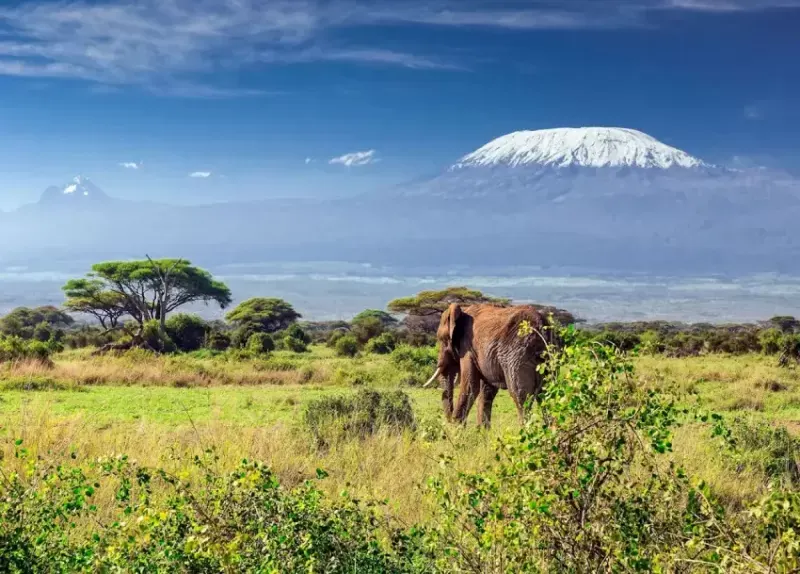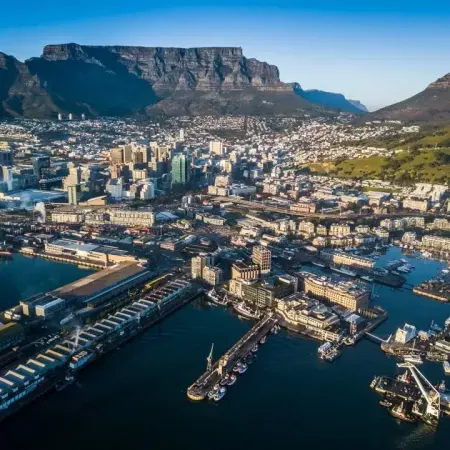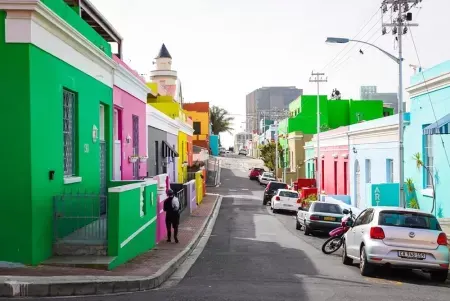You can dream scaling one of the best-known high mountain peaks, so if it is something that you've ever done or seen yourself doing, Mount Kilimanjaro should be at the top of your bucket list. The highest mountain in Africa, as well as the tallest free-standing mountain in the world, Kilimanjaro is a magnet for adventurers, lovers of nature, and experienced hikers around the world. This iconic destination in Tanzania makes for an unforgettable experience. Be it an experienced climber or just someone in thirst for adventure; here is all you need to know about Mount Kilimanjaro and how to savor your stay there.

Climbing Kilimanjaro is more than just an adventure—it's one of the most iconic experiences in any Africa travel guide. As one of the top destinations in Africa, Mount Kilimanjaro attracts thousands of African tourists each year, offering a once-in-a-lifetime chance to conquer the continent’s highest peak. Whether you're planning your Africa travel itinerary or searching for thrilling Africa adventure travel, Kilimanjaro deserves a top spot on your list.
Why Kilimanjaro?
The reason for climbing Mount Kilimanjaro is probably undisputed—not only for its height (5,895 meters or 19,341 feet) but also for its many different landscapes, ecosystems, and the spirit of adventure that comes with it. Compared to most heights, Mount Kilimanjaro climbing does not require special mountaineering skills. It can be accomplished by climbers of varied skill levels. Altitude and physical endurance are what will bring the challenge, but for many an adventurous spirit, it will be within reach. This trek is perfect for any African tourist seeking to explore iconic landscapes.
Best Time to Visit Kilimanjaro
The best time to go to Kilimanjaro is the dry season that occurs from approximately late June to October and again from late December to March. Such months had the most stable weather conditions with fewer rains and clearer skies. But again, Kilimanjaro is near the equator, so the temperatures do vary widely from the base, which is tropical, to sub-zero at the top. This is essential knowledge for anyone planning an Africa travel itinerary.
Summit Routes
Many routes lead up to the summit, providing unique experiences for the climber. The five most popular routes are:
Marangu Route (Coca-Cola Route): The Marangu is often referred to as the easiest route, but it is the only one where one can sleep in huts. The climb is fairly quick, usually 5 to 6 days.
Machame Route (Whiskey Route): A beautiful trail in all senses, the Machame is a great option for climbers looking for adventure. The Machame route takes an average of 6 to 7 days because of its rough terrain.
Lemosho Route: This route is great for those looking to spend time away from crowds and into an unhurried off-the-beaten-path. Most people do take 7 to 8 days to reach the summit, which is nice for acclimatization.
Rongai Route: The most beautiful footpath, with stunning views and quiet trekking, as it usually only sees small groups of people, and takes around 6 to 7 days.
Northern Circuit Route: Together with the Northern Circuit, this is the last to be put into use and considered the least popular. The 9 to 10 days required are worth it for its overtly wonderful scenery combined with good acclimatization.
These routes are commonly included in curated African Tours packages offered by many adventure travel companies.
Things to Know Before You Go
Altitude Sickness: When on an ascent of Kilimanjaro, altitude may bring about some cases of altitude sickness in climbers, which may sometimes become severe. It is, thus, important that you take acclimatization breaks, drink plenty of water, and inform your guide should you not feel well. The best way to prevent altitude sickness is to just take it easy.
Physical Preparation: No technical climbing skill is required, but Kilimanjaro is a tough climb, and good physical condition is a prerequisite. Preparing yourself for this challenge involves regular hiking, doing cardiovascular exercises, and building strength in the legs.
Gear and Equipment: You should dress appropriately because temperature changes at altitude can be very sudden. In the lowlands, you are in warm tropical conditions, but as you gain altitude, temperatures begin to drop considerably, especially at night. So layer your packing with waterproofs and, of course, sturdy hiking boots for the trek.
Guides and Porters: It is compulsory to climb Kilimanjaro with a licensed guide, and most climbers hire at least one porter to help carry their gear. The guides are always experienced and knowledgeable, and above all, they make a great difference to safe and successful summiting.
Permits: A climbing permit to Kilimanjaro will need to be obtained. Normally, this is arranged through a tour operator. Pulling down to the numbers, the cost of the permit varies according to the route taken, length of stay, and number of porters and guides required.
If you’re planning to travel to Africa for trekking, Kilimanjaro is a must on your Africa adventure travel list.
What to Expect on the Trek
Mount Kilimanjaro encompasses a series of ecosystems, each more breathtaking than the preceding one, as one climbs its majestic heights. You can expect the following:
- Rainforest Zone: At the base of Kilimanjaro, a dense rainforest protects from the sun, harboring a vast variety of wildlife.
- Moorland Zone: Little above the rainforest lies a starkly different environment, contrasting constant volcanic landscapes with strange plants.
- Alpine Desert Zone: As you proceed upward, the barren alpine desert begins with little to no vegetation and intensified abrasive conditions.
- Arctic Zone: Further up at the summit, there is an arctic zone with glaciers, snow, and chilling temperatures; the summit views are stunningly beautiful.
- This kind of immersive trekking makes Kilimanjaro one of the top destinations in Africa for those looking for a true African safari guide and hiking experience.
- The Summit: Uhuru Peak is the most coveted achievement by the climbers on the Kilimanjaro trek. Standing at the summit, one can have sweeping views of Tanzania's beautiful landscape, where the sight of the acres of plains below, shining glaciers, and the encircling national parks is an exhilarating moment and a rare experience, making everything worthwhile.
What to Do After the Climb
Many travelers who have just completed their Kilimanjaro climb usually opt for soaking themselves in the sun on the endless white beaches of Zanzibar, a small island off the coast of Tanzania. With its unspoiled, white-sanded beaches, crystal-clear waters, and rich cultural heritage, Zanzibar is definitely paradise on earth, an ideal setting to unwind from the arduous trek. A perfect way to wrap up your Africa travel guide experience.
Climbing Mount Kilimanjaro cannot be anything but one of the most electrifying and incredible adventures in life. It's a physical challenge, an interlude through various ecosystems, and above all, it's a chance to see one of the most famous landscapes in Africa. So if you're really into this kind of thing, Kilimanjaro has got to have been on your mind for a while.
Whether you're a seasoned adventurer or a first-time Africa tourist, this climb offers something extraordinary for everyone.
Are you ready for the challenge of the world’s tallest free-standing mountain? Let Around Egypt Tours help you plan your ultimate Kilimanjaro adventure today! Whether you’re planning your Africa travel itinerary or just looking for the best places to visit in Africa, Kilimanjaro will always stand out as a bucket-list destination.









